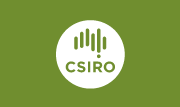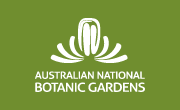Policy on destructive sampling from herbarium specimens
The Australian National Herbarium (CANB) will permit the removal of material from loan specimens, and extraction of pollen, spores, DNA or phytochemicals, from normal dried specimens and from specimens preserved in liquid for descriptive research purposes as long as the following guidelines are adhered to.
- Permission must first be obtained from the Curator to remove material, using the Destructive Sampling Request form (Microsoft Word .docx file). Sampling can be undertaken by CANB staff by prior arrangement if the specimens are not required on loan.
- Material may only be removed when the tissue or organ concerned is in sufficient quantity on the specimen to leave similar material intact, and the integrity of the herbarium specimen is not compromised. Where possible, samples should be taken from the material in fragment packets and/or from obscured portions of the specimen, and then with great care so as to not damage the rest of the specimen.
- Leaf material removed for DNA analysis should be no larger than 3 cm² and consideration should be made to the original method by which the specimens were dried. Specimens that have been collected in tropical areas have often been preserved using alcohol before drying and should be avoided. In the case of cryptogams (e.g. bryophytes, lichens and fungi), sampling is restricted to the minimum amount of material that can be removed from the specimen without compromising its physical integrity.
- Material MUST NOT be removed from Type specimens, historical specimens (pre 1900) or dissection cards.
- For any specimen sheet where material has been removed, an archival quality paper slip annotated with typescript or indelible ink (not ballpoint pen) indicating the type of material removed, purpose of the project, by whom, at what institution and the date, should be attached to the sheet or container, or included in the box or packet (for cryptogams).
- The following classes of material must not be made available to any third parties without written permission and a separate Materials Transfer Agreement from the lending institution:
i. specimens, or fragments of specimens (taken from loans or supplied separately), or
ii. derived material (e.g.: aliquots, extracts), or
iii. images, or
iv. formulae or synthetic pathways for substances originally derived from specimens on loan
- Any DNA sequence data resulting from these samples should be deposited in GenBank (http://www.ncbi.nlm.nih.gov/Genbank/). Please notify CANB of the GenBank accession numbers or if available before return of the loan add the information to the annotated slips on the loan specimens.
- Copies of SEMs or light photographs resulting from use of the samples should be sent to CANB.
- The Australian National Herbarium should be acknowledged in any publications resulting from research using the samples. Copies of any such publications would be appreciated for deposition in the library.
- We reserve the right to modify these conditions, impose additional restrictions, or to refuse requests for destructive sampling based on the nature of the proposed research and the condition of the material available.
All enquiries and requests for permission outlining the nature of the project, the taxa requested, nature and size of sample and the name of the researcher and institution should be addressed to cpbr-info@anbg.gov.au.
![An Australian Government Initiative [logo]](/images/austgovt_canbr_90px.gif)




